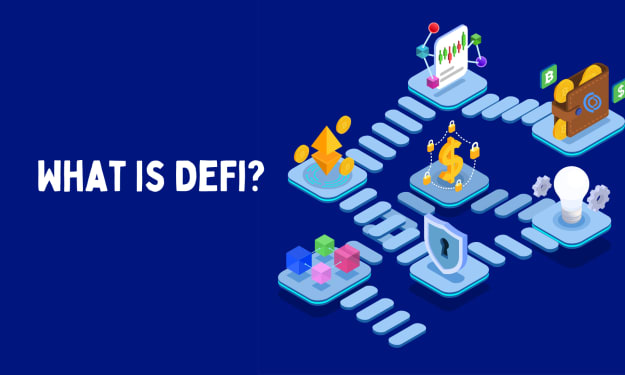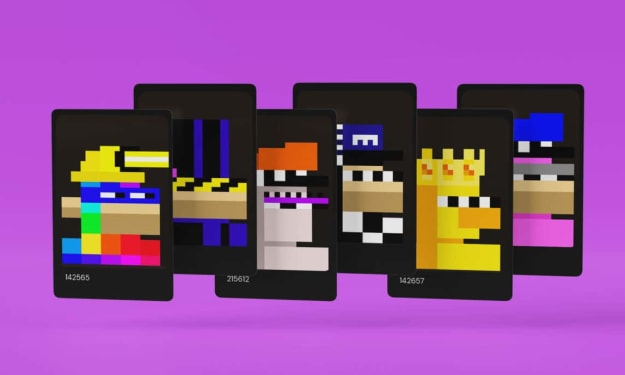
WHAT IS AN NFT? WHAT DOES NFT STAND FOR?
Non-fungible token.
That doesn’t make it any clearer.
NFTs are digital items that can be bought and sold using this blockchain technology.
Like cryptocurrencies, NFTs are bought and sold on specialized platforms.
At the start of 2021, only hardcore crypto fans knew what NFTs were.
How do NFTs work?
At a very high level, most NFTs are part of the Ethereum blockchain. Ethereum is a cryptocurrency, like bitcoin or dogecoin, but its blockchain also supports these NFTs, which store extra information that makes them work differently from, say, an ETH coin. It is worth noting that other blockchains can implement their own versions of NFTs.
What’s worth picking up at the NFT supermarket?
NFTs can really be anything digital (such as drawings, music, your brain downloaded and turned into an AI), but a lot of the current excitement is around using the tech to sell digital art.
NFTs have sometimes sold online for astronomical sums, with major companies now joining the craze as the tokens find their way into everything from the art market to video games.
But what exactly are these digital assets, and how are they traded?
Something that is "fungible" can be exchanged with an equivalent item -- for example, a $5 bill with another $5 bill.
Cryptocurrencies, which use a digital public record of transactions called a blockchain, are fungible.
NFTs are digital items that can be bought and sold using this blockchain technology. But they are not fungible, making them a different type of asset.
Some have sold for millions, including an NFT by digital artist Beeple which went under the hammer at Christie's in March for an eye-watering $69.3 million.
At the close of the year, market data showed that nearly $41bn had been spent on the digital artworks and collectables.
The industry has proven divisive; some preach their potential to revolutionise the art world, others are more cynical.
Some of the most coveted NFTs are released via collections of thousands of unique individual cartoons, such as the Bored Ape Yacht Club.
They are seen as intrinsically cool by their owners, who enjoy boasting of their purchases by displaying them as their social media avatars.
The tokens aren't necessarily images, though: on several websites, such as Decentraland and The Sandbox, you can buy virtual land in NFT form.
Critics say investors are spending money on meaningless items, but supporters insist that NFTs are much more than digital trinkets.
Some predict that using the blockchain to record the ownership history of an item will eventually become much more widespread, revolutionizing how we think about property.
How are NFTs traded?
Like cryptocurrencies, NFTs are bought and sold on specialised platforms. OpenSea is the best-known NFT marketplace.
A sale does not necessarily involve the transfer of the object depicted by the token.
NFTs of famous paintings have been sold, for example, but the buyer does not receive the painting.
What changes hands is a certificate of ownership of the NFT, registered on the blockchain. The certificate must be kept safe in a digital wallet, which can take various forms.
The wallet might be accessed via Metamask, a free internet browser extension, or a secure physical device. It might also take the simple form of a code printed on a piece of paper.
To purchase an NFT, the wallet must contain enough of the relevant
cryptocurrency -- for example, ether (ETH) if the person is buying a token on the Ethereum blockchain.
With a little technical know-how, it is also possible to make, or "mint", your own NFT.
Ultimately, NFTs are digital contracts, with certain rules embedded such as the number of copies available for sale.
It is a database entry that is most often stored on the Ethereum blockchain. When you buy an NFT, you are given a cryptographic record which sort of functions like a digital deed. It keeps a record on the blockchain that you own the original piece.

What are the Risks?
misunderstood -- and that can lead to investors not knowing quite what they are dealing with.
Every interaction with the blockchain involves fees to pay for "mining" -- the hugely energy-intensive computer calculations needed to verify each transaction.
Thousands of users might rush to buy a much-coveted NFT as it's minted, and they have to pay the fees even if they walk away empty-handed.
Some buyers use bots to try to ensure that they get their hands on a token, which makes the market even less accessible for newbie investors.
"A very small group of highly sophisticated investors rake in most of the profits from NFT collecting," blockchain data company Chainalysis said in a recent report.
And it added that NFTs are often sold at a lower price to enthusiasts who have helped to create hype for the project.
Otherwise, you are a humble buyer who wants to support the creator. One of the easiest ways to browse for and buy NFTs is through a platform. There's a few, including Rarible to Mintable, but the biggest one of all is OpenSea.
However, you need to own the cryptocurrency Ether, the coin that exists on the Ethereum blockchain where NFTs usually live, to buy them.
You can buy ETH from crypto exchanges such as Coinbase. To store them, you need to set up a digital wallet. This comes in useful later, as you need to be able to access this wallet to buy a NFT.
Next, you need to connect this wallet to OpenSea, which you can do by visiting OpenSea.io and going to your profile.
Once that's all set up you are free to browse the endless amounts of NFTs, from the affordable 'buy it now' pieces to the high-end pieces that go to auction.
Some of the NFTs are listed as free, but you still have to pay a 'gas fee' to own it, due to the energy needed to make the transaction through the blockchain.






Comments
There are no comments for this story
Be the first to respond and start the conversation.